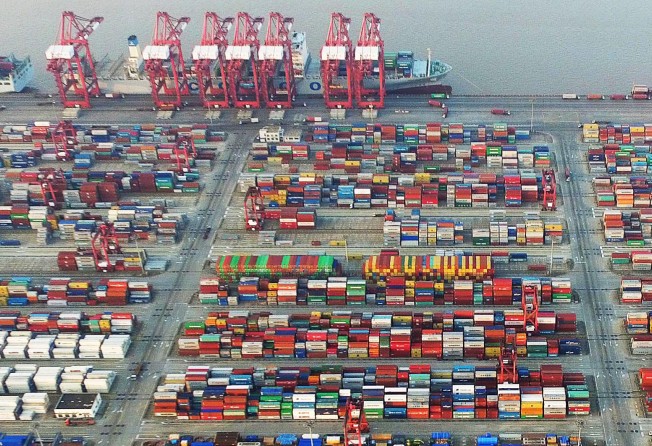China Insurance Investment set up to serve Beijing’s strategic goals in ports, other projects
Scores of Chinese insurance companies and insurance premium managers establish direct investment vehicle through its maiden fund

Dozens of mainland Chinese insurance companies and insurance premium managers have set up a direct investment vehicle to pour 40 billion yuan towards government policy and national strategic projects through its maiden fund, as part of the industry’s asset allocation diversification.
China Insurance Investment, which is registered in Shanghai’s free-trade zone, was officially set up on Monday with a registered capital of 1.2 billion yuan, the China Insurance Regulatory Commission (CIRC) said in a statement on Tuesday.
The new company will focus its investment activities on “serving national strategic needs and the real economy,” it said, adding the insurance sector’s long-term investment horizon is conducive to meet such goals. Some 27 insurance firms, 15 insurance asset management firms, four private firms make up the 45 initial shareholders of the new firm.
Daiwa Securities analyst Leon Qi said although China Insurance Investment’s investments have national strategic significance, they should not be seen as “national service” since they need to also meet return expectations of the insurers and that of other private investors.
“As interest rates are declining and insurers’ premium collection are rising rapidly, the CIRC has spearheaded the formation of China Insurance Investment to invest in assets other than bonds, shares and deposits to provide extra diversification,” he said. “Long term direct investments also meet insurers’ desire to have more exposure in investments with longer term investment horizon and return profile.”
The 40 billion yuan first-phase fund will be deployed to finance port acquisitions and construction in Sri Lanka, Turkey and the Republic of Djibouti in East Africa by state-backed China Merchants Steam Navigation, and the building of liquefied natural gas vessels to meet the needs of the US$27 billion Yamal LNG project in Russia, a gas development joint venture by Russia’s Novatek, France’s Total and China National Petroleum Corp.
The funding would enhance China’s energy security and support Beijing’s strategy to use state-backed logistics facilities to import energy, the CIRC said.
China Insurance Investment has already inked memoranda of understanding on over 100 billion yuan worth of investment projects, of which 60 billion yuan were on shanty town reconstruction and city infrastructure projects.
It has also reached investment intent on 200 billion yuan worth of projects, including overseas acquisitions and investments in clean energy and Internet-enabled “big data” and “cloud-computing” ventures, CIRC added.
The State Council, China’s cabinet approved the establishment of China Insurance Investment in June 2015. It stipulated that its funds must be at least 80 per cent contributed by insurance institutions, and its investors make their own investment decisions based on their value judgement and risk tolerance level.
The intended investment scope encompasses Beijing’s “one-belt, one-road”, Beijing-Tianjin-Hebei economic zone, Yangtze River Delta economic zone strategies, transportation infrastructure in central and western regions, urbanisation, modern logistics, health and elderly care, energy and resources, information technology, environmental protection, and small and medium enterprises.
UOB Kay Hian analyst Edmond Law said although such direct investments with national strategic goals may have lower short-term returns, their longer term return tends to improve as their interest cost falls and cash inflow increases over time.
“Although the overall return may not be too high, they account for a relatively small portion of insurers’ investment portfolios,” he added.